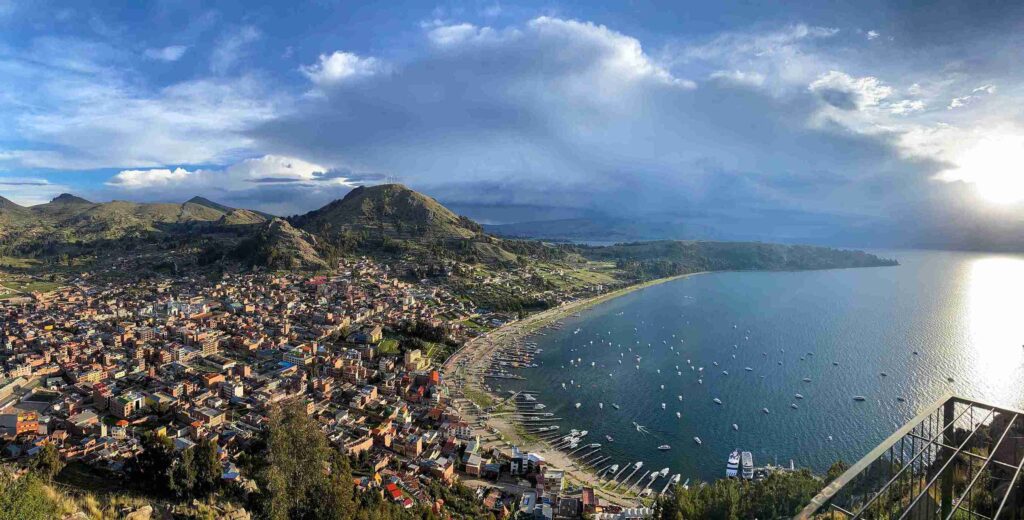Copacabana, Bolivia – Travel Tips
Category
Categories
Popular Articles

**Overview of the Destination**
Nestled among the snow-capped peaks of Bolivia lies the charming town of Copacabana. This enchanting locale is famously known as the home to the religious shrine of the Virgen de la Candelaria and the traditional starting point for tours to Isla del Sol, an island famed for its archaeological ruins and connection to Inca mythology. Copacabana’s rich culture, religious significance, and breathtaking natural beauty make it a must-visit spot on anyone’s Bolivian itinerary.
**Best Time to Visit**
Copacabana witnesses a pleasant climate throughout most of the year, but the ideal time to visit is during the dry season, from May to October. The days are sunny and warm, perfect for outdoor activities and exploring the nearby Lake Titicaca. The rainy season, from November to April, sees fewer tourists, offering a more tranquil experience. A significant event worth planning around is the Fiesta de la Candelaria in early February, a vibrant celebration involving music, dance, and traditional customs.
**Climate & What to Pack**
Copacabana experiences relatively mild temperatures throughout the year. The summer months (December through March) see temperatures ranging from 50°F to 65°F, while winter periods (May to October) experience cooler weather, often dropping below freezing at night. Packing layers is essential due to these temperature shifts, while a waterproof jacket is handy in the rainier months. Also, remember to pack comfortable shoes, sunscreen, a hat, and sunglasses, as the sun can get quite intense due to high altitude.
**Getting There**
The nearest major airport is El Alto International Airport in La Paz. From there, you can take a bus or private transfer to Copacabana, which typically takes around 4 hours. Be sure to check visa requirements for Bolivia as it varies depending on your nationality.
**Getting Around Locally**
Copacabana is a small town, so most places are easily reachable on foot. There are also taxis available for longer distances. However, note that public transportation such as buses will be required to reach surrounding attractions, such as Isla del Sol.
**Safety Tips**
Generally, Copacabana is considered safe for tourists. However, like anywhere else, maintain basic precautions—guard your personal belongings and avoid deserted areas late at night. Sensitivity to local customs and traditions, particularly related to religious sites, is also important. Solo travelers should find the town friendly and approachable.
**Top Things to Do & See**
Apart from visiting the Basilica of Our Lady of Copacabana and touring Isla del Sol, make sure to explore Calvario Hill for its breathtaking lake views. Visit the local markets for traditional handicrafts and stroll around the colonial-era town square. For the adventurous, there are opportunities for kayaking and hiking in the surrounding areas.
**Where to Stay**
Whether you’re a budget backpacker or luxury seeker, Copacabana caters to different travel styles. For luxury, Hotel Rosario Lago Titicaca offers comfortable rooms with stunning lakeside views. Mid-range options include La Cupula, known for its quirky design and welcoming atmosphere. For budget accommodations, Hostal Joshua has a great reputation.
**Food & Local Cuisine**
Bolivian cuisine ranges from hearty stews to delicious pastries. In Copacabana, the specialty is, of course, trout from Lake Titicaca. Check out local dining spots such as La Orilla or Las Velas for a taste of this regional dish. Street food also offers a chance to taste inexpensive local delicacies.
**Cultural & Practical Tips**
The national currency is the Bolivian boliviano, and Spanish is the primary language spoken. Tipping is generally appreciated, but not compulsory. Most Bolivian plugs are Type A, with 230V voltage. Wi-Fi can generally be found in hotels and some cafes, although it may not be as fast as what you’re used to.
**Sustainable or Responsible Travel Tips**
As a visitor, respecting the community’s environment and cultural heritage is vital. Stick to marked trails when hiking, use refillable water bottles to minimize plastic waste, and consider locally owned businesses when eating out or purchasing souvenirs.
**Personal Travel Tips**
One often-overlooked tip for visiting Copacabana is to give yourself enough time to adapt to the altitude. Located at over 3,800 meters above sea level, some visitors may experience altitude sickness. Remember to stay hydrated and rest if needed, and don’t rush your activities. Copacabana is a place where you want to take your time to soak in the tranquil atmosphere, awe-inspiring landscapes, and rich cultural traditions. Your journey here is sure to be an unforgettable experience!










